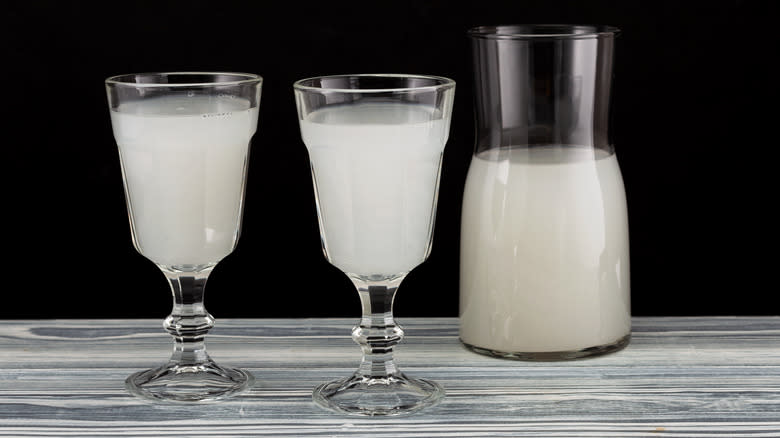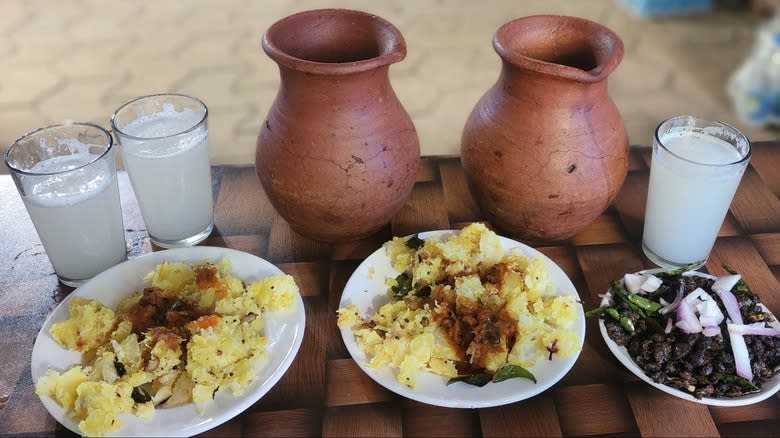What Is Palm Wine And Why Is It So Popular In India?

Undoubtedly, booze can be complex -- take a fine wine or an intricately distilled spirit, and many factors go into the resultant product. However, it's easy to forget that at its most fundamental, the creation of alcohol is a natural process. All that's necessary is some sugar -- which is typically found in fruit, grains, or vegetables -- and an introduced yeast, which carries out the fermentation and produces alcohol and carbon dioxide as a result. Oftentimes, humans strongly intervene in the process, but that's not always the case.
Take palm wine, a milk-like booze that's long been consumed in Africa and Asia. Palm trees are full of sweet, flavorful sap; it's what makes palm sugar unique. As a result, this fermentation only requires the sap that oozes from a cut palm tree to form alcohol -- though climbing the tall trees to harvest it is no easy task. Once exposed to air, this sticky substance starts fermentation immediately, and within a couple of hours, has already reached 4% alcohol by volume (ABV). Without any manipulation, palm wine caps out at around 5% ABV, but turns to vinegar within a day, so fresh consumption is paramount.
It's a drink teeming with microorganisms and yeasts, so, unsurprisingly, the character is funky. Palm wine packs in sour and very sweet notes, underlaid with a yeasty, milky, smoky, and even nutty undertone. As it sits out in the air, it turns more sour, not to mention that it's produced from many different palm tree varieties, so precisely pinpointing its flavor is tricky. However, it's tasty, affordable, and easy-to-make, which makes it especially popular in the tropical climate of southern India.
Read more: 13 Liquors Your Home Bar Should Have
Palm Wine Is One Of India's Most Beloved Beverages

With its hands-off creation process, palm wine has been consumed for a while -- estimates go as far back as 16,000 B.C. Such far-reaching enjoyment has lent it an important cultural status in many regions, including a place in wedding rituals in Nigeria. But when it comes to the consumed volume -- and ubiquity -- of palm wine, another prominent location is the South Indian state of Kerala.
Here, toddy, as the drink is called, is collected by thousands of workers daily, continuing a tradition that goes back generations. By the afternoon, the jugs make it to tavern-like establishments called shaaps, where the drink is enjoyed alongside extra spicy and aromatic casual fare. You might find dishes like Kerala-style egg curry, or perhaps okra sambar, and definitely some incredibly flavorful seafood dishes.
Especially in recent years, the quality of the food in such toddy-focused restaurants has further popularized the drink. And the social nature of these bars has made toddy an ingrained part of local culture, with modernization not affecting its consumption. The drink has even avoided bans on alcohol enacted in the area, a social issue once increased when toddy used to be distilled into a liquor called arrack prior to a ban. So, if you're in the area, sample this sweet and flavorful beverage that's a prominent part of local culture.
Read the original article on Tasting Table.


